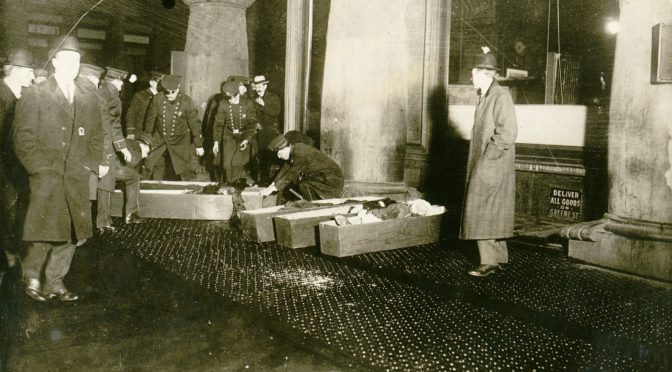The Triangle Shirtwaist Factory Fire has gone down in history as a significant turning point for the labor movement. Back in 1911, 146 workers were killed by a fire at their workplace in lower Manhattan — many blocked from the exits by bosses attempting to avoid workplace theft, left to burns to their death. From this tragedy, crucial movements and organizing were catalyzed, leading to major workplace safety reforms.
In Labor Notes, SLU’s David Unger asks if the current pandemic might be a similarly catalyzing moment for the labor movement:
Already, weeks into the pandemic, there is a newfound recognition of who is “essential” in our society and economy. Unfortunately, these newly recognized essential workers are bearing the brunt of working in this crisis.
In New York City, Stephen Jozef, an electrician working on a Google office building, became the first construction worker to die, before workers demanded a stop to construction of high-rises and luxury apartments. The following day, Kious Kelly, a nurse at Mt. Sinai hospital where workers had worn garbage bags as personal protective equipment (PPE), became the first New York nurse to die from the disease.
As of this week, eight members of Transport Workers Union Local 100 have died. More than 330 Transit Authority workers have tested positive, with 2,700 ordered to quarantine at home. This was after management had refused for weeks to give workers masks.
For the newly “essential” food service and grocery industries, the lack of protections is a crisis for both workers and the public. Prior to COVID-19, only 25 percent of food service workers received paid sick days. “The Centers for Disease Control and Prevention reported in 2014 that fully 20 percent of food service workers had come to work at least once in the previous year ‘while sick with vomiting or diarrhea,’” the New York Times wrote in an editorial (“The Companies Putting Profits Ahead of Public Health”).
Unger suggests we look to history for lessons about how this tragic and terrifying moment might facilitate a more liberatory pathway forward:
In the days after the fire, hundreds of thousands of New Yorkers lined the streets of New York for a funeral march organized by the ILGWU. The revitalized labor movement in New York and nationwide led the calls for accountability and reform and kept relentless pressure on the city and state for years.
So how can we apply those lessons today? Unger suggests that the work is already underway:
Much like textile workers before them, workers are organizing in industry after industry for mutual aid and action. Pittsburgh sanitation workers pulled a wildcat strike for PPE and additional pay. Amazon, Whole Foods, and Instacart workers struck for paid leave, safer conditions, and health care for part-time employees. Chipotle workers walked out demanding sick leave and better sanitation. General Electric workers are protesting to demand their factories be used to build ventilators.
As a recent Whole Foods strike leader shared hopefully, “There’s been an incredible little strike wave this week, and I would like to see all these disparate movements come together, because there’s a lot of overlap in what we’re asking for.”
There is a chance that the COVID-19 crisis will be a “trigger event”—that the horror of working poor people and immigrants risking their lives—and dying—to keep us fed and cared for will be viewed with the same horror as were those 146 workers’ deaths for the Triangle owner’s profits. That being forced to work while sick will become as shocking as women and children working around the clock behind locked doors in factories. That working without health care and protective equipment will lead to the creation of new forms of oversight by government and community. That previously invisible immigrant workers will continue to be treated as essential.




